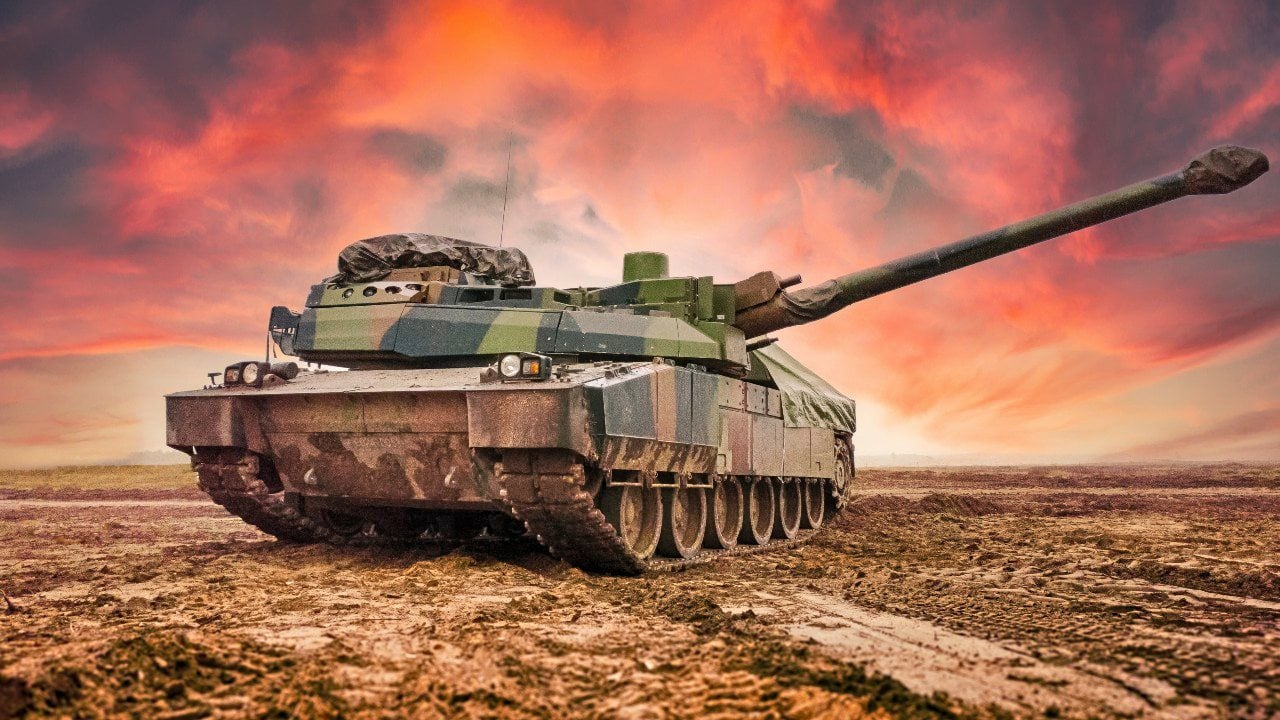France's Leclerc Main Battle Tank Is One of the Best on the Planet
The Leclerc, a third-generation main battle tank utilized by the French army since 1992, features advanced capabilities making it a formidable force in modern warfare.
Summary: The Leclerc, a third-generation main battle tank utilized by the French army since 1992, features advanced capabilities making it a formidable force in modern warfare. Equipped with a 120mm CN120-26 smoothbore gun, the Leclerc offers superior firepower with its high-velocity shots and automatic loading system capable of handling six types of ammunition.
-It boasts a rapid propulsion system powered by a 1,500-horsepower SACM V8X Hyperbar diesel engine, achieving speeds over 70 km/h.
-Its lightweight design enhances mobility without compromising protection, thanks to welded steel and ceramic armor plating. Currently, the Leclerc serves not only France but also the UAE and Jordan, with potential future operators including India, Croatia, and Ukraine.
Leclerc Tank: Unveiling the French Powerhouse on Modern Battlefields
The Leclerc is a third-generation French main battle tank. This generation of MBTs uses composite armor and is known for the computer-stabilized fire control systems that allow the tanks to fire with high accuracy while moving.
Most tanks in operation today are third-generation, with just a few fourth-generation tanks operational worldwide. (The fourth-generation Leclerc XLR will be delivered to the French army throughout the 2020s.)
Let’s take a closer look at the features that have kept the Leclerc in service with the French army since 1992.
Armament
The Leclerc features a 120mm version of the F1 smoothbore gun, designated as the CN120-26. The 52-caliber gun is longer than the 44-caliber guns commonly found on MBTs and gives a higher muzzle velocity.
The Leclerc’s main gun uses 120x570mm NATO ammunition. It has a magnesium alloy thermal sleeve and an automatic loading system, designated the CHA, that weighs 500 kilograms and can engage with six targets simultaneously. The normal firing sequence is less than 8 seconds. The autoloader features a continuous link carrier magazine with 22 cells and a rammer, and up to six different types of ammunition are compatible.
For secondary armament, the Leclerc is outfitted with a 12.7mm coaxial M2 heavy machine gun and a turret-mounted 7.62mm machine gun.
Propulsion
For propulsion, the Leclerc relies on an eight-cylinder SACM V8X Hyperbar diesel engine with an automatic transmission. The Hyperbar system uses a small Turbomeca TM 307B gas turbine, which operates as both a turbocharger and an auxiliary power unit.

This 1,500-horsepower engine allows the Leclerc to exceed 70 kilometers per hour. Because the Leclerc’s combat weight is just 56 tons (lighter than most Western MBTs), the tank has one of the West’s best power-to-weight ratios at 27 horsepower per ton. The tank is fast, and it can accelerate to 32 km/h in 5 seconds.
The tank’s range is 550 km but can be extended with external gas tanks to 650 km.
Protection for Leclerc Tank
The Leclerc’s turret and hull are made of welded steel plates that range in thickness from 30 mm to 50 mm. On each side of the tank, six composite armor modules are mounted, each covered in an anti-slip fiberglass coating.
Modern models (Block 10 and 11 Leclercs) have ceramic armor plates bolted on the top of the reactive modules. Additionally, the fuel tanks are self-sealing.

The Leclerc also features passive countermeasures. A Lacroix GALIX self-defense system mounted near the turret can fire smoke grenades, fragmentation grenades, or an infrared decoy.
Today, the Leclerc is in operation with France, the United Arab Emirates, and Jordan. Potential future operators include India, Croatia, and Ukraine.
About the Author: Harrison Kass
Harrison Kass is a defense and national security writer with over 1,000 total pieces on issues involving global affairs. An attorney, pilot, guitarist, and minor pro hockey player, Harrison joined the US Air Force as a Pilot Trainee but was medically discharged. Harrison holds a BA from Lake Forest College, a JD from the University of Oregon, and an MA from New York University. Harrison listens to Dokken.


